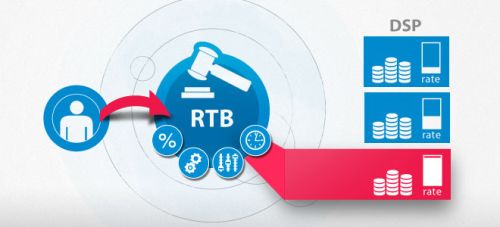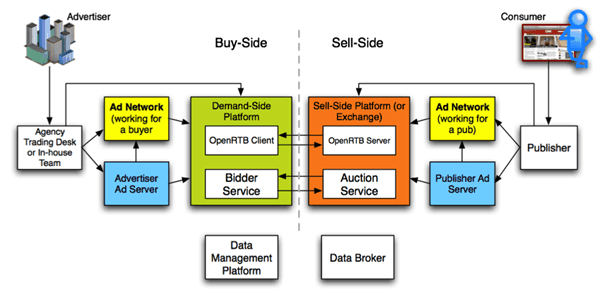Real-time bidding is a relatively new technique that is being used by many auctioneers, auction houses and advertising houses in order to conduct property sale transfers and advertising inventory more smoothly.
Similarly in the digital marketing space, programmatic instantaneous auction technology allows for an ad to be instantly placed on the site of a publisher once that publisher wins an impression auction. The technology has been credited with letting advertisers optimize and manage ads from multi-thread networks while granting user access to a multitude of various networks without losing any cost-effectiveness.
The major upgrade for advertisers is that it gives them the ability to create advertising campaigns on an instantaneous basis. They are also able to allocate a much higher percentage of their unsold advertisement inventory. It is also very easy to prioritize different kinds of networks when using real-time bidding.
– The Main Difference between Real-time Bidding and Static (Direct Buy/Traditional) Auctions
Static auctions are selling many different impressions at once. However, real-time bidding gives the auctioneer the ability to sell impressions one by one. Overall, this has been shown to be a much more effective method for advertisers as well as for publishers.
– How does one become involved with real time bidding methods?
The first action that usually takes place is a visit to a website from a user that triggers a bid request. These bid requests can include all kinds of demographic and psychographic information, and they have been upgraded to include many localization analytics that were not previously possible to discern. The request for a bid moves between the publisher and an ad exchange that submits it to many different advertisers at once. All of the bids are submitted in real time, with each person bidding on each impression as it is served. As with all auctions, the impression will end up going to the highest bidder with the full advertisement being served on the page of that publisher.
The process and above is repeated for every slot that is on the page that is visited. Each transaction really only takes about 100 ms in order to be fully processed. The bidding is usually autonomous, and the maximum bids are set by advertisers. Although some of the bidding can become very complex, the basics for all kinds of ads will follow this process.
– What are the different platforms for real-time bidding?
There are two major types of platforms when it comes to real-time bidding – demand-side platforms and supply-side platforms.
Demand-side platforms give the buyers multiple sources of advertising inventory at the same time. The history of a certain user can actually help to determine the value that an individual impression will have for that user. This process can be done in real time as well.
Supply-side platforms will often be used by large publishers in order to manage the yield for an advertising campaign. These platforms will utilize much of the data that has been generated from bidding on the impression level in order to help generate the next advertising campaign. These technologies are very easy to bundle in an exchange.


